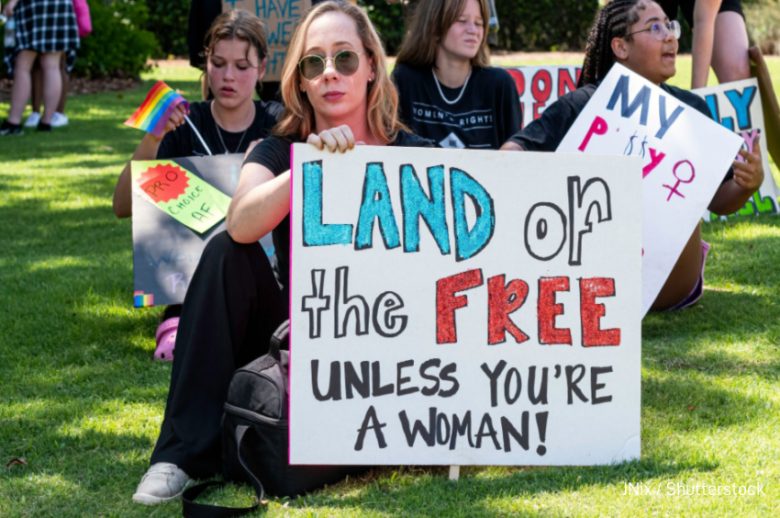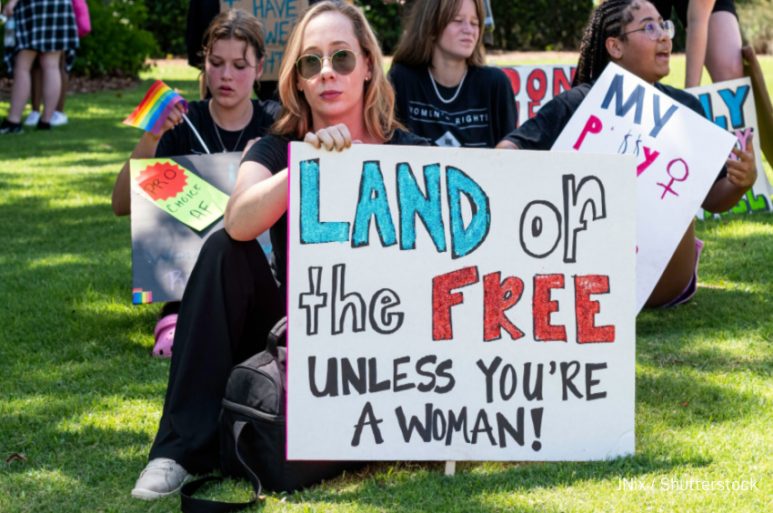By Victoria Antoine
When Politico broke the story that the US Supreme Court planned to overturn a landmark decision on women’s rights, the media, both in the US and internationally, soon jumped on the story. Roe v. Wade represents a turning point for abortion rights across the United States from 1973 until the Supreme Court overturned it in 2022. The case was brought by Jane Roe, who would later identify as Norma McCovey, who sought an abortion in Texas, where the procedure was illegal except to save the mother’s life. The history behind the case started in the1970s, during the height of the Women’s Rights Movement in the US. In 1970, Norma McCovey filed a lawsuit against Dallas District Attorney Henry Wade, claiming abortion laws were unconstitutional. In 1971, the Supreme Court agreed to hear the case. McCovey would give birth to a girl, who was put up for adoption before the decision came in the Court.
Between 1973 until now there have been several attempts by the conservative right to overturn Roe v. Wade. However, this became more possible when the Supreme Court shifted more conservative during Donald Trump’s presidency when he appointed three conservative judges. In May 2022, Politico published an exclusive report that exposed the Supreme Court’s intention to overturn Roe v Wade. According to the leaked document Justice Alito wrote that ‘Roe was egregiously wrong from the start’ and had to be overruled. In June 2022, Roe v. Wade was overturned. The Supreme Court’s 6-3 vote and expected to lead to the end of abortion rights in roughly half of the states in the country.

The public in the US has different attitudes when it comes to abortion in general. Today, 61% of American adults say, ‘Abortion should be legal in all or most cases,’ and 37% think ‘abortion should be illegal in all or most cases’. The media’s response to the Supreme Court’s decision was divided and depended on the political leanings of each outlet. For example, major liberal media outlets such as the Washington Post and MSNBC were very critical about the decision and their coverage focused on the impact this decision would have on women and for women’s rights. At the same time major conservative media such as Fox News were celebrating the Supreme Court’s decision and their coverage looked at other cases that protect people’s rights such as same sex marriage, access to contraceptive facilities and others. The coverage that social issues and especially women’s issues receive by US media is very complex as they have a long history of creating a platform of controversial topics that would make certain parts of the audience more uncomfortable.
The history of the coverage of abortion rights in the country is certainly long and complicated. In 1990 the Los Angeles Times published a controversial study on abortion rights titled ‘Abortion Bias Seeps into News’ written by David Shaw. This a four part study looked at how the major media outlets in the US cover abortion issues. The study examined media coverage for over 18 months and ‘included more than 100 interviews with journalists and with activists on both sides of the abortion debate’, found that the US press favours abortion rights and that bias exists in media coverage.
Even though it has been over 30 years since that study was conducted it is still relevant today as it reflects on today’s abortion issues which have led to the long-term overturning of Roe v. Wade. Abortion is essentially a class issue in the United States; the more money and education a person has and the less religious a person is, the more likely the person is to favour abortion rights. Television is more vulnerable to charges of bias on abortion than newspapers and magazines. Most television news programs often lead to the kind of superficiality and sensationalism that results in bias. In the Los Angeles Times study, Douglas Johnson who was the director for National Right to Life Committee said that the ‘insular culture that produces network newscasts’ creates an ‘implicit bias (that) is more pervasive . . . than in the print media’. Such a rather strong statement still stands today, and it is more prominent on social media.
Tiktok reps refuse to approve any of our ads.
Meanwhile, Planned Parenthood has active ads running on Tiktok with clear political motives.
Tiktok has allowed over $80,000 in ads in the last month to run unhindered, per @Digiday.
Here’s a screenshot of an active ad: pic.twitter.com/sFZWELO6ZM
— Lila Rose (@LilaGraceRose) August 4, 2022
Women of Colour Are Volatile to Anti-abortion Campaigns
With the overturn of Roe vs. Wade, communities are affected by the decision, especially women of colour. Young and low-income women who are disproportionate of colour may not be able to afford the cost of travel for abortion care. According to Guttmacher Institute, the abortion rate for Black women is almost five times that for White women.
‘In the United States, the abortion rate for black women is almost five times that for white women. Antiabortion activists, including some African-American pastors, have been waging a campaign around this fact, falsely asserting that the disparity is the result of aggressive marketing by abortion providers to minority communities,’ reads a Guttmacher Institute report.
Black women consistently have the highest abortion rate, followed by Hispanic women. Research shows that those most likely to seek abortion care, including women of colour, poor women, and those with a chronic or acute health conditions, are most likely to encounter severe complications during pregnancy. Half of the US states in the South, Midwest, and Plains have restrictive abortion laws. The Plains States also have large Indigenous populations. According to research that was done in the past, a national ban on abortion, similar to that one of 2022, would lead to an additional 140 women would die annually from pregnancy-related causes, increasing the deaths by a third.
Moving forward from Roe v. Wade, Americans are starting to see the consequences of US politicians creating a green light that would allow the states to go even farther than they have to regulate abortion will be affected by women of low income. About 75% of the people who currently get abortions are either low-income or poor, which will increase higher for people living under the restrictive abortion ban. Blue states such as California and Massachusetts made an executive order to protect their abortion rights for the residents but prepared for the massive migration of out-of-state residents traveling to blue states to access abortion care.
As several US States are beginning to see the impact of Roe v. Wade’s overhaul the media are focusing on the case of a 10-year-old rape victim who was who was forced to travel out of state to terminate her pregnancy. This case has become the focus of a heated debate over what the new abortion bans mean for the lives of the youngest patients and their bodies.
Abortion rights have always been a contested issue in the USA and considering the country’s media environment, the way it has been covered by the media throughout the years is no surprise. Even though the majority of US networks look at abortion rights favourably their overhaul coverage is ‘deeply problematic’. According to Kristin Ford, national communications director for NARAL Pro-Choice America and Global Strategy Group, who spoke with Ms. Magazine ‘the media has a really important role to play in how they shape the conversation and the public discourse around abortion’. US reporters have covered abortion as a constant debate between pro-choice Democrats and pro-life Republicans when in fact the debate is much wider than that and public opinion differs. The constant focus on the pro-choice vs pro-life debate takes the focus away from those who are directly impacted by the issue.
Photo Credits: JNix / Shutterstock

